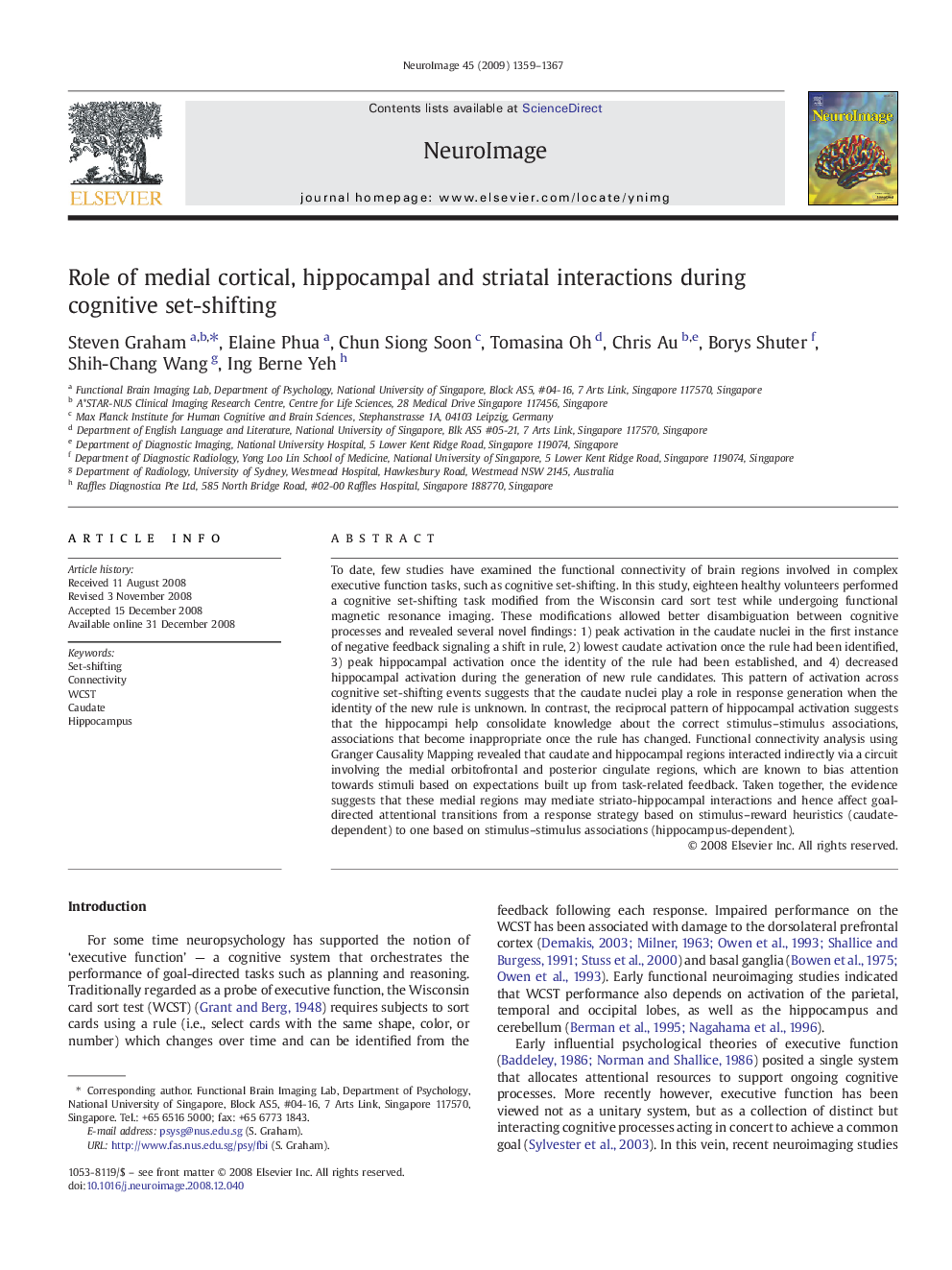| Article ID | Journal | Published Year | Pages | File Type |
|---|---|---|---|---|
| 3072541 | NeuroImage | 2009 | 9 Pages |
To date, few studies have examined the functional connectivity of brain regions involved in complex executive function tasks, such as cognitive set-shifting. In this study, eighteen healthy volunteers performed a cognitive set-shifting task modified from the Wisconsin card sort test while undergoing functional magnetic resonance imaging. These modifications allowed better disambiguation between cognitive processes and revealed several novel findings: 1) peak activation in the caudate nuclei in the first instance of negative feedback signaling a shift in rule, 2) lowest caudate activation once the rule had been identified, 3) peak hippocampal activation once the identity of the rule had been established, and 4) decreased hippocampal activation during the generation of new rule candidates. This pattern of activation across cognitive set-shifting events suggests that the caudate nuclei play a role in response generation when the identity of the new rule is unknown. In contrast, the reciprocal pattern of hippocampal activation suggests that the hippocampi help consolidate knowledge about the correct stimulus–stimulus associations, associations that become inappropriate once the rule has changed. Functional connectivity analysis using Granger Causality Mapping revealed that caudate and hippocampal regions interacted indirectly via a circuit involving the medial orbitofrontal and posterior cingulate regions, which are known to bias attention towards stimuli based on expectations built up from task-related feedback. Taken together, the evidence suggests that these medial regions may mediate striato-hippocampal interactions and hence affect goal-directed attentional transitions from a response strategy based on stimulus–reward heuristics (caudate-dependent) to one based on stimulus–stimulus associations (hippocampus-dependent).
